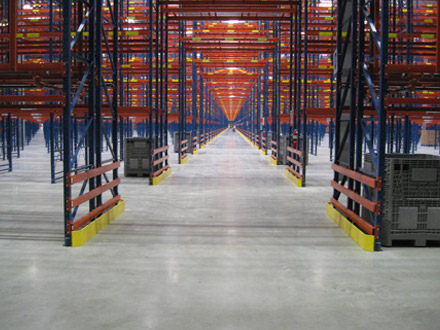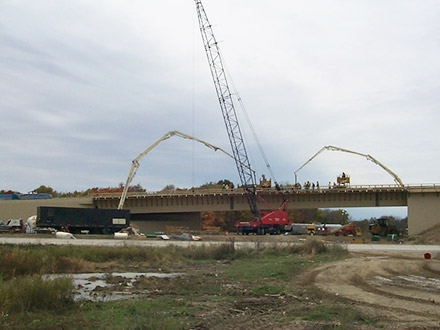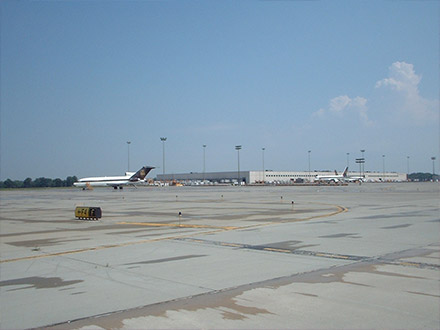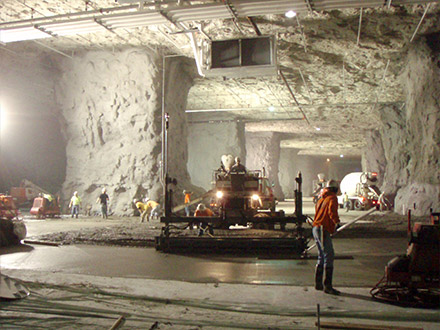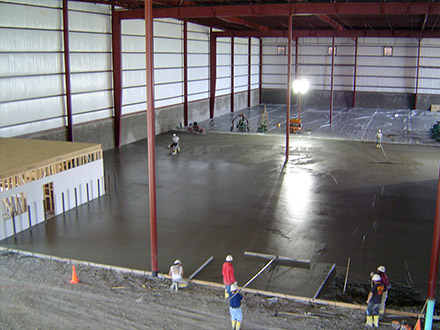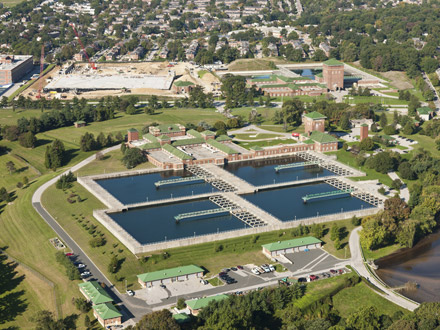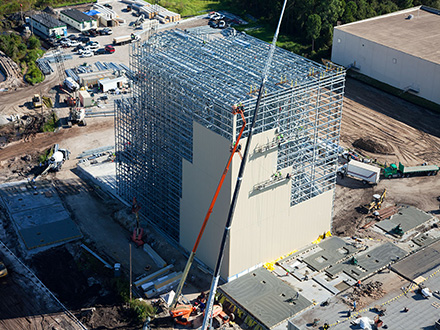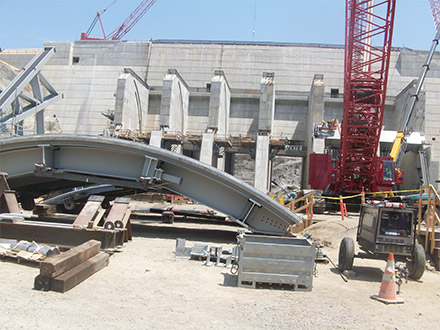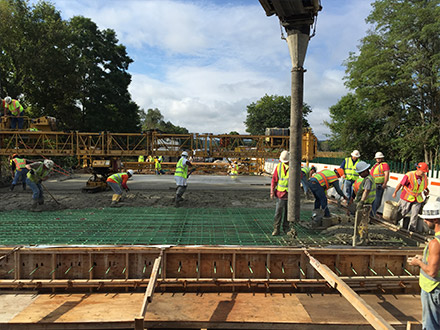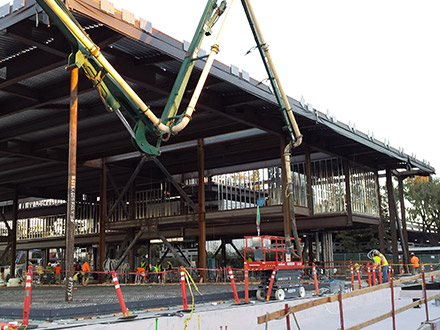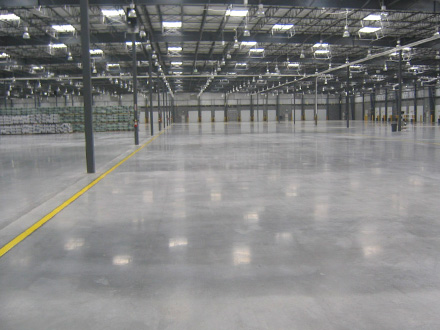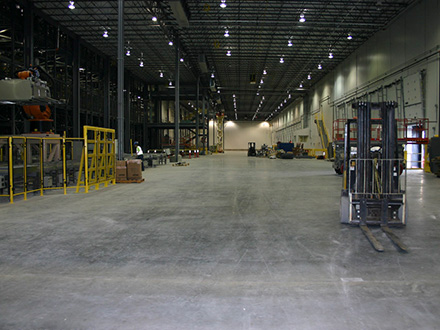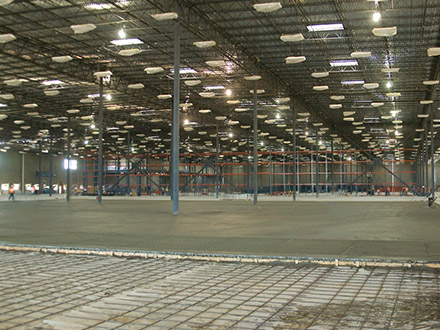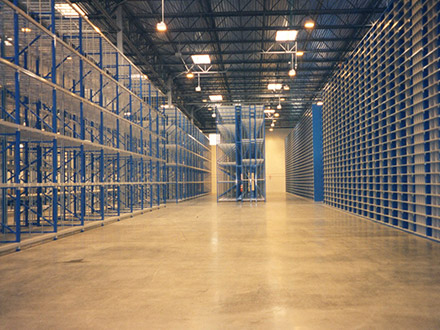Architectural Flooring Systems

The C4A3S in Komponent combines with free lime in the concrete to form ettringite. The early ettringite formation produces controlled expansion within the concrete or grout mix, effectively counteracting tensile stress and overcoming negative volume change. The amount of expansion is engineered in the concrete mix design to compensate for the shrinkage characteristics of the local portland cement, aggregates, and SCMs and any other constituents that influence drying shrinkage.
Shrinkage-compensating concrete is placed with some form of restraint, whether traditional rebar, post-tensioning tendons, steel fibers, micro-rebar, or synthetic fibers. The initial designed expansion puts the reinforcement into tension. The tensioned reinforcement acts like a stretched rubber band holding a stack of papers together, which puts the concrete into compression.
In conventional concrete slabs, drying shrinkage cracks occur when movement caused by negative volume change is resisted by an external restraint, such as friction with the subgrade. This produces tensile stress that literally "tears" or fractures the concrete. By preventing negative volume change, shrinkage-compensating concrete and grout materials effectively prevent drying shrinkage cracking that leads to early deterioration, repairs and failures.
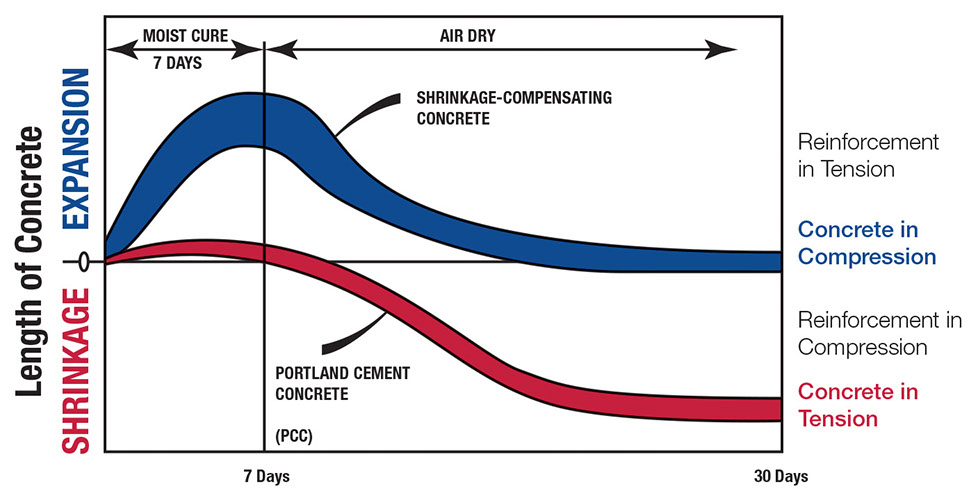
No. Shrinkage-reducing admixtures (SRAs) are designed to delay shrinkage by influencing the surface tension of excess pour water. This decreases capillary stress and shrinkage induced during drying. Over time, these effects diminish and the excess free water is released, resulting in delayed drying shrinkage.
Komponent technology creates a high-quality cement paste that efficiently consumes mix water during hydration and chemically binds the water molecules within the ettringite structures. Once chemically bound, they cannot be separated, ensuring dimensional stability of the concrete.
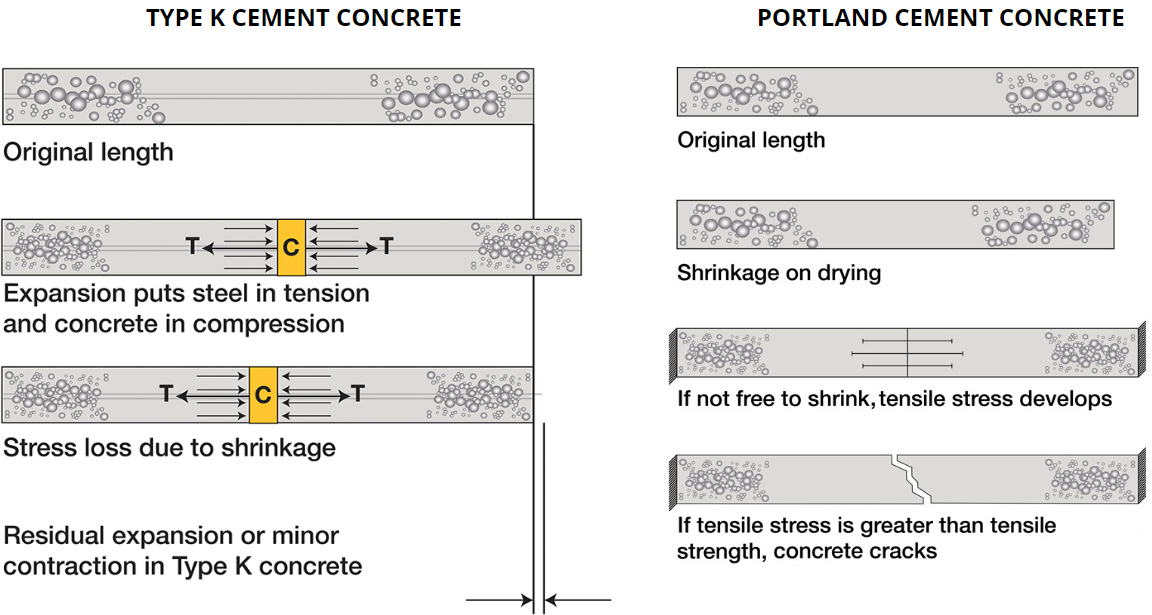
Improved Concrete Quality
Long-Term Dimensional Stability
Extend Joints in Slabs & Walls
Common SOG Joint Spacing up to 150+ ft
Post-Tension Joint Spacing up to 1,200 ft
Prevents Curling, Shrinkage Cracking, Corner Breaks & Edge Spalls
Up to 60% Greater Abrasion Resistance
Minimizes Saw Cut/Control Joints
Minimizes Maintenance Costs from Joint Deterioration and Equipment Damage
Maximizes Design Versatility (L/W Ratio up to 3:1)
Thinner Walls & Slabs Are Viable
Eliminates Temperature & Shrinkage Steel
Reduces Reinforcement (Load Transfer, Post-Tension Tendons)
Eliminates Restraint to Shortening Challenges
Eliminates Pour/Delay Strips
For over 60 years Type K shrinkage-compensating concrete has been meeting stringent sustainable design requirements long before today’s initiatives influenced industry standards. Learn how its dimensional stability and durability affords unmatched design versatility, helps minimize the carbon footprint, reduces life-cycle costs, and maximizes asset life. Learn how.
